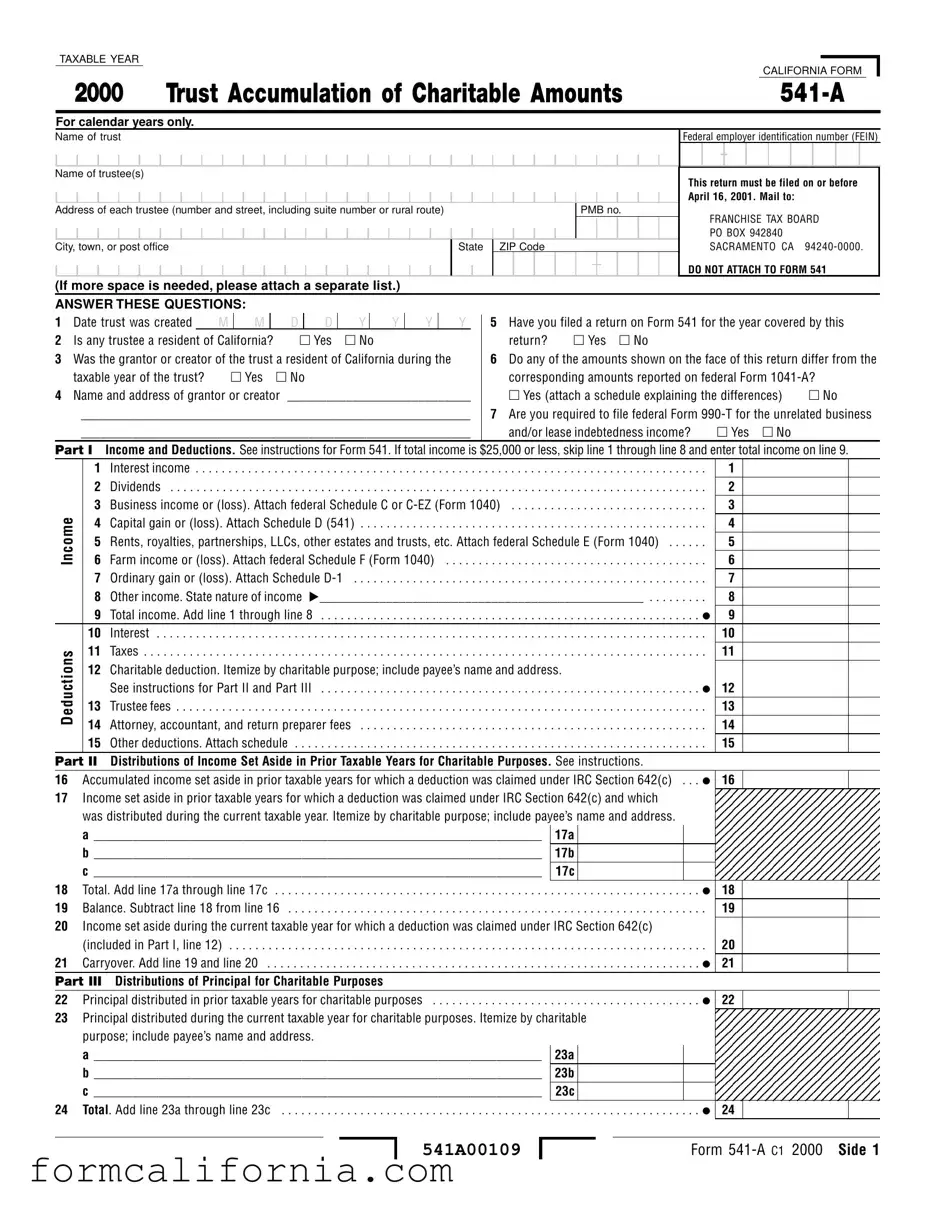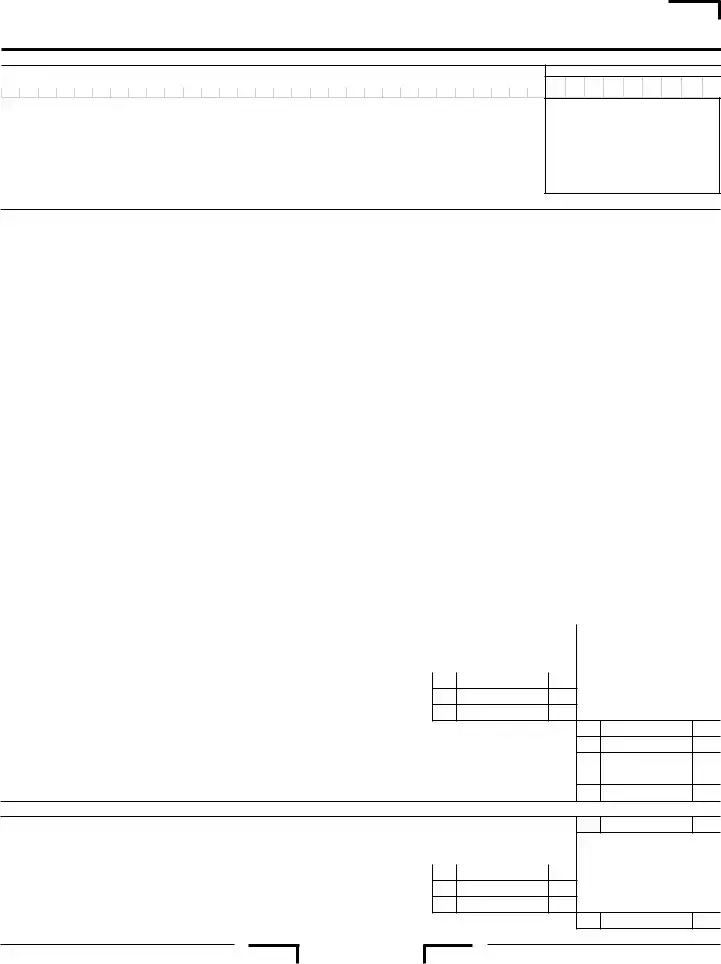The California Form 541, California Fiduciary Income Tax Return, shares similarities with the 541-A, particularly in its basic function of reporting income, deductions, and taxes for trusts and estates. Both forms are essential for fiduciaries managing trusts within California, addressing different aspects of tax reporting and compliance. While Form 541 covers broader fiduciary income tax obligations, Form 541-A specifically deals with the reporting of charitable amounts accumulated by a trust, emphasizing the trust's charitable giving aspects.
Form 990, Return of Organization Exempt from Income Tax, is akin to Form 541-A in that both serve entities focused on beneficence, though their target filers differ. Form 990 is for tax-exempt organizations, detailing their financial activities, including income, expenditures, and charitable activities, much like how Form 541-A reports charitable distributions by trusts. The emphasis on transparency in charitable activities and financial accountability is a strong common thread between these forms.
Form 1041, U.S. Income Tax Return for Estates and Trusts, is the federal counterpart to California's Form 541 and indirectly relates to Form 541-A through its provision for reporting income and charitable deductions at the national level. Form 541-A complements Form 1041 by tracking the specific use of charitable distributions within California, ensuring that trusts comply with both state and federal tax obligations related to their charitable activities.
Form 990-T, Exempt Organization Business Income Tax Return, and Form 541-A are similar because they both involve specific instances where tax-exempt entities, including trusts with charitable purposes, must report income. While Form 990-T focuses on taxable business income earned by tax-exempt entities, Form 541-A deals with the accumulation of charitable amounts, showing the specific rules that apply to income related to charitable activities, even within tax-exempt operations.
Form 1041-A, U.S. Information Return Trust Accumulation of Charitable Amounts, directly parallels Form 541-A, serving a similar purpose at the federal level. It reports on the accumulation and distribution of charitable amounts by trusts, offering a federal perspective on the activities that Form 541-A covers for California. This connection underscores the dual layer of reporting - state and federal - required for trusts engaged in charitable efforts.
The Schedule K-1 (Form 1041), Beneficiary’s Share of Income, Deductions, Credits, etc., while technically a part of Form 1041, shares a functional similarity with Form 541-A in terms of disclosing how distributions, including those for charitable purposes, affect the tax obligations of trust beneficiaries. This linkage highlights the importance of transparency in how trusts manage and distribute funds for charitable and non-charitable purposes alike.
Form 199, California Exempt Organization Annual Information Return, and Form 541-A intersect in their focus on organizations and entities that undertake charitable work. Though Form 199 is for tax-exempt organizations reporting their annual financial information, and Form 541-A is specifically for trusts reporting charitable accumulations, both ensure these entities adhere to regulations governing their tax-privileged operations, emphasizing accountability in their fiscal management.
Form 5227, Split-Interest Trust Information Return, is a federal form for trusts that have both charitable and non-charitable beneficiaries, similar to the purpose of California's Form 541-A in focusing on charitable aspects. It details income, deductions, and distributions of such trusts. The similarity lies in their shared goal of monitoring how split-interest trusts manage their dual obligations to both charitable causes and private beneficiaries.



